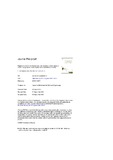Mostrar el registro sencillo del ítem
Progress in the removal of pharmaceutical compounds from aqueous solution using layered double hydroxides as adsorbents: a review
| dc.creator | Santamaría Aquilué, Rafael | es_ES |
| dc.creator | Vicente, Miguel Ángel | es_ES |
| dc.creator | Korili, Sophia A. | es_ES |
| dc.creator | Gil Bravo, Antonio | es_ES |
| dc.date.accessioned | 2021-09-06T12:27:29Z | |
| dc.date.available | 2022-12-01T00:00:12Z | |
| dc.date.issued | 2020 | |
| dc.identifier.issn | 2213-3437 | |
| dc.identifier.uri | https://hdl.handle.net/2454/40419 | |
| dc.description.abstract | Emerging contaminants and, among them, pharmaceutical compounds, have a significant impact on water ecosystems. Layered Double Hydroxides (LDH), being easy to synthesize and cheap materials, have recently gained attention as adsorbents in aqueous solutions. This work describes the latest research performed in the adsorption capacity of LDH towards both antibiotics and Non-Steroidal Anti-Inflammatory Drugs (NSAID) describing and analyzing the synthesis conditions (Me2+:Me3+ molar ratio, calcination temperature, choice of metals for the memory effect), kinetics and isotherm models used, use of support (more practical in a 3D over a 2D form), temperature effect and several techniques for the recovery of the adsorbents. LDH exhibited great performance and potential as clean adsorbents for these emerging contaminants. | en |
| dc.description.sponsorship | This work was funded by the Spanish Ministry of Economy, Industry and Competitiveness (AEI/MINECO) and the European Regional Development Fund (ERDF) through project MAT2016-78863-C2-R. LS thanks the Universidad Pública de Navarra for a pre-doctoral grant. AG also thanks Banco Santander for funding through the Research Intensification Program . | en |
| dc.format.extent | 50 p. | |
| dc.format.mimetype | application/pdf | en |
| dc.language.iso | eng | en |
| dc.publisher | Elsevier | en |
| dc.relation.ispartof | Journal of Environmental Chemical Engineering, 8 (2020) 104577 | en |
| dc.rights | © 2020 Elsevier Ltd. This manuscript version is made available under the CC-BY-NC-ND 4.0 | en |
| dc.rights.uri | http://creativecommons.org/licenses/by-nc-nd/4.0/ | |
| dc.subject | Adsorption | en |
| dc.subject | Emerging contaminants | en |
| dc.subject | Layered double hydroxides | en |
| dc.subject | Pharmaceutical compounds | en |
| dc.title | Progress in the removal of pharmaceutical compounds from aqueous solution using layered double hydroxides as adsorbents: a review | en |
| dc.type | info:eu-repo/semantics/article | en |
| dc.type | Artículo / Artikulua | es |
| dc.contributor.department | Zientziak | eu |
| dc.contributor.department | Institute for Advanced Materials and Mathematics - INAMAT2 | en |
| dc.contributor.department | Ciencias | es_ES |
| dc.rights.accessRights | info:eu-repo/semantics/openAccess | en |
| dc.rights.accessRights | Acceso abierto / Sarbide irekia | es |
| dc.embargo.terms | 2022-12-01 | |
| dc.identifier.doi | 10.1016/j.jece.2020.104577 | |
| dc.relation.projectID | info:eu-repo/grantAgreement/MINECO/Plan Estatal de Investigación Científica y Técnica y de Innovación 2013-2016/MAT2016-78863-C2-R | en |
| dc.relation.publisherversion | https://doi.org/10.1016/j.jece.2020.104577 | |
| dc.type.version | info:eu-repo/semantics/acceptedVersion | en |
| dc.type.version | Versión aceptada / Onetsi den bertsioa | es |
| dc.contributor.funder | Universidad Pública de Navarra / Nafarroako Unibertsitate Publikoa | es |



